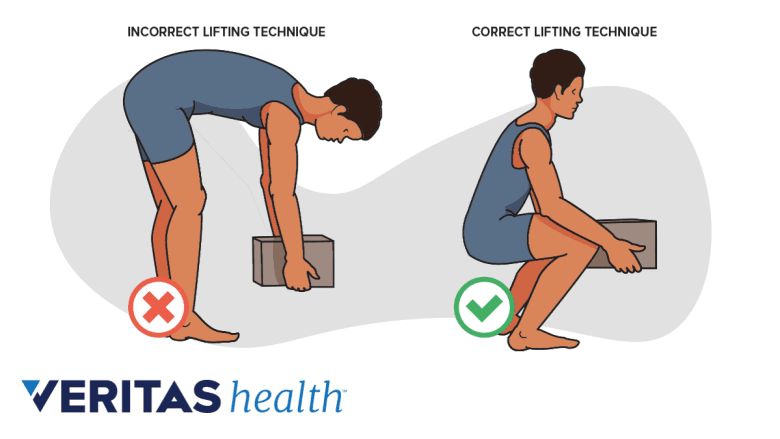The corollary to undertaking productive activity is stopping destructive activity, and there are many opportunities throughout the day to modify common actions that can hurt a degenerated disc, such as
In This Article:
Correcting posture and using low back support
A supported posture minimizes muscle strain and supports the spine's alignment.
Degenerated discs are frequently more painful when an individual is sitting, especially if he or she is slumped forward putting more pressure on the lower back. Sitting upright in an ergonomic chair that provides low back support for the natural curve in the lumbar region can prevent irritating discs. Hanging a small mirror near their desk can allow patients to check posture and remind them to straighten up.
Changing position often to relieve stress and increase blood flow
Just standing and walking 10 paces every 20 or 30 minutes is enough to prevent low back stiffness from setting in.
Lifting heavy objects correctly

Supported lifting postures prevent overstretching and tears in the lumbar muscles.
This involves holding the object close to the body, engaging the large quadriceps muscles in the thighs and placing the object by pivoting the feet, not twisting the back or torso. Leaning over from the waist should be avoided.
Finally, sleeping on a comfortable, supportive mattress can make the difference between waking up refreshed and waking up stiff and sore. There are many mattresses designed to provide support to the natural curves of the back, and patients should choose the type of mattress they feel most comfortable in to help them sleep soundly at night.
Editor’s Top Picks

